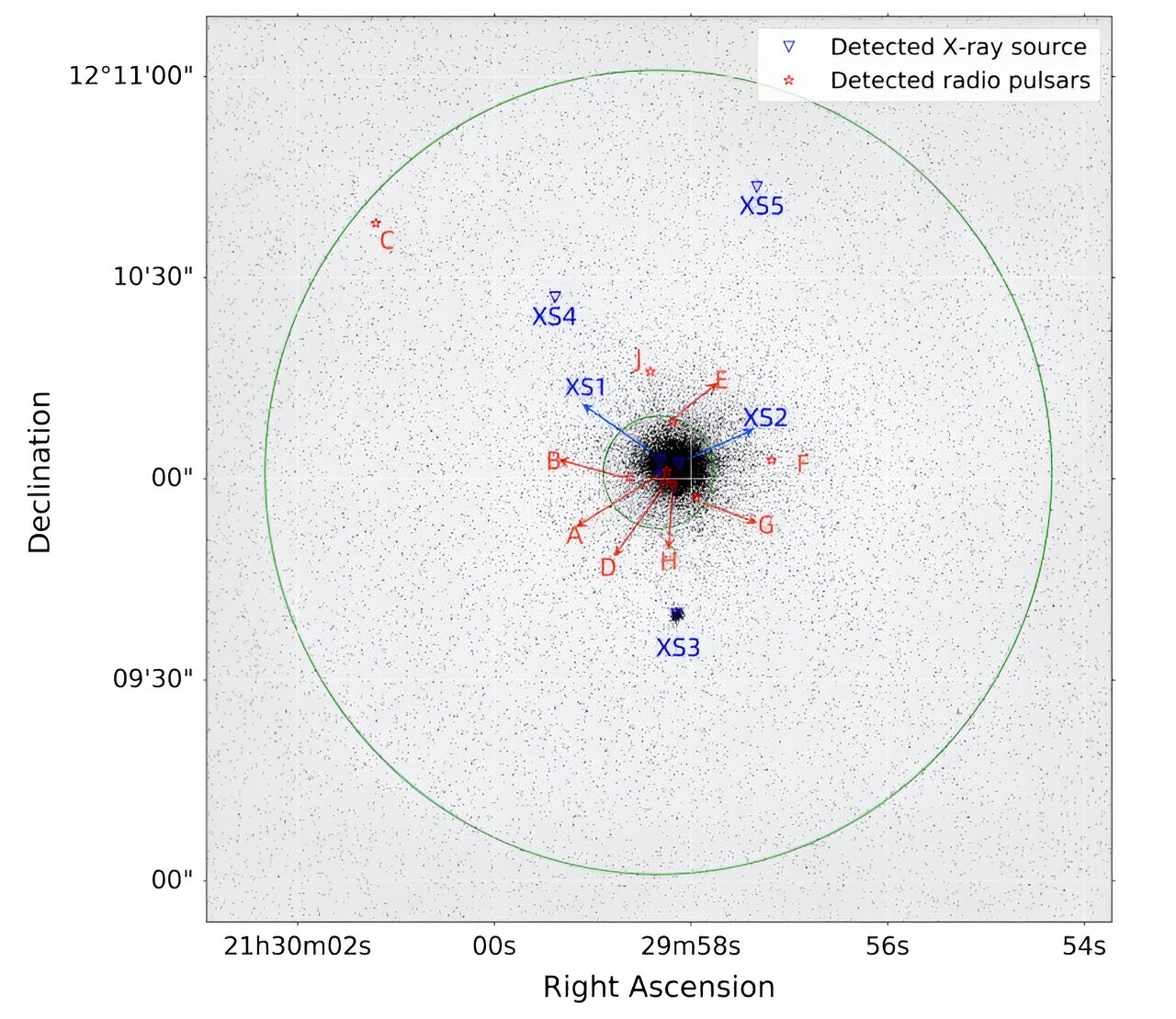Using China’s Five-hundred-meter Aperture Spherical radio Telescope (FAST), astronomers have discovered three new pulsars in an old Galactic globular cluster known as Messier 15. Two of them turned out to be long-period pulsars, while the remaining one spins so rapidly that it was classified as a millisecond pulsar. The finding was reported in a paper published Dec. 11 on the pre-print server arXiv.
Located some 35,700 light years away from the Earth, Messier 15 (also known as NGC 7078) is a core-collapsed GC with a radius of about 88 light years and an estimated mass of 560,000 solar masses. It is one of the oldest (about 12 billion years old) and most metal-poor Galactic GCs (with a metallicity of approximately −2.25), and one of the most densely packed GCs in our galaxy.
Previous observations of Messier 15 have detected nine pulsars and the first one was identified in 1989. According to simulations, Messier 15 is possibly one of the GCs with the highest number of pulsars. That is why a team of astronomers led by Yuxiao Wu of the Chongqing University of Posts and Telecommunications in China, decided to conduct a pulsar search in this cluster using FAST.
The newfound pulsars received the designations PSR J2129+1210J, PSR J2129+1210K and PSR J2129+1210L. The observations found that PSR J2129+1210J is an MSP, while the other two are long-period pulsars.
According to the study, PSR J2129+1210J is an isolated pulsar with a spin period of approximately 11.84 milliseconds and its dispersion measure was calculated to be 66.68 pc/cm3. When it comes to PSR J2129+1210K, it has a spin period of about 1.93 seconds and a dispersion measure of 68.01 pc/csm3.
2023-12-20 14:41:03
Article from phys.org rnrn



















